
You may have seen the video of my son, Hunter, throwing his first ace (that’s disc golf language for “hole-in-one”) back in October, 2016. The video went “Disc Golf Viral”. Last I checked there was a quarter million views total. See video here >>>>> Two Minus Ace Video. That video was the culmination of a bunch of skills that he had learned over his six years of life. See the video of “The Making of the Two Minus Ace”. Most of what he learned was not because I intentionally had him doing specific things to become good at disc golf. However, I did some things, without knowing if they were “good” or “bad” at the time, that are worth reviewing. I think we can all learn something from these take-aways, whether you have a child or not.
1. Let them play with toy mini discs and basket sets as soon as they can crawl.
I remember Hunter teething on a mini. I’m kind of joking because we didn’t intentionally have him “teeth” on the mini but we did get a mini in his hand before his first birthday. It might sound crazy but at this early age he was already getting used to the feel of a disc in his hand. It was probably about the time that he could crawl that we got a toy mini disc golf basket and I started showing him where to put the discs. I would walk over and set the discs in the basket. I would do it over and over until he was eventually crawling over and placing them in the basket himself (along with any other toy in the general area). I remember laughing to myself that my son probably thought the basket was some weird “toy box”. I believe this “game” of placing something in the basket was fun for him and ignited his interest for what he didn’t know as disc golf, yet. As the year/s went on, we demonstrated tossing the mini discs into the toy basket. He began throwing them in the direction of the basket and even got some in, to which my wife and I would cheer. Most of his “putts” were overhand throws, but hey, there’s no rule to how a one year old kid can throw a disc, right? At first I thought throwing mini discs could/would mess up any practical skills for disc golf. Never mind the fact that you can only do so much with a mini. However, I was wrong. Throwing something so small and light actually takes skill. Skills that I now believe are crucial to getting good at disc golf. Having your child throw a mini disc teaches them the principles of disc flight, something that I didn’t understand myself when I first started at twenty-one years old. I remember the first time I saw someone “hyzer flip” a disc. I thought I was seeing something magical and was truly impressed at how someone could manipulate a disc like that. For my son/s they learned that principle quickly with a mini, something that they couldn’t have learned so quickly with a full size disc. I now watch both my 6 year old and 2 year old son throw mini discs the length of our house with ease. They can throw sidearm (do you know how hard that is to do well with a mini?!) and backhand. They can turn them over perfectly and can throw a hyzer when necessary to make it around a corner after exiting the hallway. Both of my sons have thrown many “aces” at about forty feet with their minis. They took the principles learned with the mini discs to larger discs (still keeping them light weight). I’ve seen it firsthand. I now watch Hunter throw a full size disc and then follow that up by throwing a mini disc without any trouble. That takes skill!
2. Let them play their own variation of disc golf.
This is especially true for the really young players. I’m talking about the 2-5 year olds who are just learning. This is what it looked like when I would go play a round with Hunter tagging along. “Hey Hunter” I would say, “Where’s the basket?!” to which Hunter would smile and begin looking down the fairway with focused eyes. I would throw my drive and let him throw his (his throw usually flew off sideways or backwards about 20 feet). Then I would ask him to pick up his disc and keep following me to where my shot landed. I would throw my shot and he would throw his. I would ask him to pick up his disc every time and follow me to my shot. In essence it was almost best disc doubles, if that helps you understand what I’m writing. When he would first see the basket, the joy that came to his face and the excitement that he let shout out was a sure sign that he was having fun! Disc golf for the first couple years was more about having fun finding each basket. He would throw each shot quickly so that he could continue looking for the basket. This type of play allowed him to enjoy disc golf in an unstructured way, which resulted in almost no frustration on his part. It also kept his interest peeked for all 18 holes, whereas, if I had him throw each shot from where his disc had landed he would have lost interest fairly quickly. He’s a few weeks away from 7 years old and he now throws every shot and tracks his score for each round. You know your child, play to their strengths and weaknesses. Don’t burn them out with every detail of the game.
3. Don’t teach your young child the rules…yet…
I forget who I learned this from, but when I was starting out in disc golf, about eleven years ago, I would listen to more seasoned players introduce someone to the sport of disc golf. There is one thing I heard that still sticks with me, “Let the new player have fun. Don’t make the rules the most important part of the introduction”. Hand your child the disc that you think is best for their arm (See point six to help in deciding which disc), but once the round of disc golf has begun, let them play it out without telling them every reason why their shot wasn’t “legal” or “right”… and be sure to offer encouraging words along the way. Use conversations in the car ride home to encourage an important thought you might have had that will coach them along to a better technique or decision making process. As far as the rules of disc golf are concerned, I have discovered that there is no need for a mini marker when the child is really young (5-6 years old or younger). There were times Hunter wanted to use a mini, because I was, but I didn’t call any foot faults! I wanted Hunter to be able to work on the mechanics of throwing and putting first and then eventually adding in an appropriate stance. My experience with this so far is that Hunter has now been able to add a mini marker in fairly easy and an appropriate stance without foot faulting most times, and he likes the new added challenge of throwing this way. Had I ensured that he did everything “right” from the beginning, there’s a chance he would have been too overwhelmed and not enjoyed disc golf. If you are out to make your son or daughter a disc golf professional, there is a high likely hood that they will lose the opportunity to fall in love with the sport we all love. Don’t get me wrong, I did/do push him to learn new techniques, mechanics, and rules. I just make sure not to press too hard to fast. You know your child, play to their strengths and be cautious of their weaknesses. Teach them the rules in a way that doesn’t discouraged them. There is plenty of time to get them on board as they grow up.
4. Get a full sized basket for the backyard.
This point seems obvious if you want your child to do well with disc golf. However, if you want your child to be able to work at their disc golf skills, it’s crucial. How many times do you think the best option for practice is for you to go out to a course? I don’t think the answer to that question is “yes” most of the time, and definitely not true for a child. I think it can be most FUN, but not necessarily best practice. Sometimes it’s best to practice certain skills off the course. I believe that to be successful on the course you must be practicing off the course. So, if you can, get a basket in your yard. Almost any basket is better than no basket. If a portable or permanent basket isn’t an option, then consider driving a wooden stake into the ground so that your child can have something to aim for when throwing. Hunter and I played/practiced for hours and hours every summer in our yard. We would play all sorts of games. Closest-to-pin, putting games of “H-O-R-S-E”, placing the basket in fun and unique situations, etc…If you haven’t been convinced by his videos and pictures yet, then take a look. This kid loves flinging plastic at baskets on and off the course.
5. Let them watch professional disc golfers online.
We’ll keep this point short. I would like to believe that my son Hunter has a bunch of natural abilities when it comes to disc golf, and he may, but I can also tell you that he loves to watch professional tournaments on YouTube which I believe played a big part in his “natural” abilities. Things like throwing backhand with a smooth and complete follow-through, jump putting, or the Paul McBeth “leg wiggle” before putting are all things you can’t teach a kid from a book. Hunter would wake up on Saturday mornings and ask to watch a disc golf tournament instead of cartoons. He can do impressions of putting styles by most of the top pros! I can honestly say that I think this played a big part in his early “successes” with disc golf. He knows what a good follow through should look like. He sees what types of putts stick in the chains. He has access to watching and learning from the best players in the game!
6. Let your child play with really light weight discs.
This point may seem like an obvious statement to me, however, I have come across people that feel like throwing max weight discs automatically makes you a better player. This point sometimes overflows into the introduction many kids get to the sport. As a result the child learns what they have to do to throw THAT disc. They have to do a major turn over shot/flex shot (whether backhand or forehand) to gain any distance. The problem with this, is that it only teaches them how to manipulate that one type of disc, which limits most shot selections because of their arm speed. It really limits their throwing options on holes that don’t allow for that type of shot. In Hunters case I discovered that he was able to throw a backyard Frisbee pretty far. So I went to the local disc golf pro shop (Marshall Street Disc Golf) and picked up a disc that looked similar to a “Frisbee”. It was the Sonic made by Innova. It was really light weight. I think it weighed in around 115 grams. He was 4-5 years old when he started throwing that disc, and was able to throw it straight with decent distance almost immediately. This principle idea kind of goes back to the “let your child throw a mini disc inside the house”. I think I’ve heard Will Schusterick say on a YouTube video, as an adult, should be able to throw an understable putter a couple hundred feet without turning it over. He said when you can do that, that you know you’re throwing style/control is getting closer to where it needs to be. Hunter was able to throw that 115 gram Sonic far and flat. It also allowed him to have a finesse touch on turnover shots and throwing a hyzer was also something he could do. All with that one lightweight Sonic!. He eventually threw the “two minus ace” that everyone in the disc golf community loved with that Sonic! The heavier discs are cool to us, for some reason, but we are five times their size. Heck, I think I’ve heard that some of the best players in the world don’t use max weight discs all the time. Aim for 130 grams or less with 110-115 grams being great for a really small arm. If they turn over the disc then they should keep throwing that disc until they learn how to throw it flat. Don’t automatically defer to another more overstable disc as a way to fix the “problem”. Let them really learn how to handle that one disc and how to throw every shot with it. They learn how a disc flies when we let them. We could have let Hunter carry around a bag of ten heavy discs that he liked, but I don’t think it would have taught him how to refine his throws in the same way. In full disclosure, Hunter constantly wanted to bring out the heavy discs and I had to constantly remind him that the lighter discs were better for him. In his young mind, and in many new players minds, throwing a light disc means you’re not a good player. I assured him this is not the case! Get light discs for your kids so that they can practice good throwing technique.
Source Credits:
Six Ways to Help Your Young Child Get a Head Start in Disc Golf | Kids Disc Golf was originally published here
More at KidsDiscGolf.com.com and Kids Disc Golf on Youtube

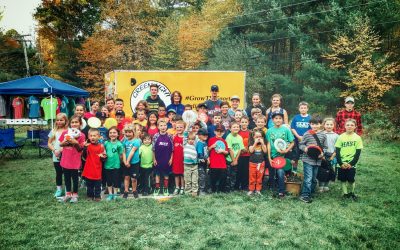
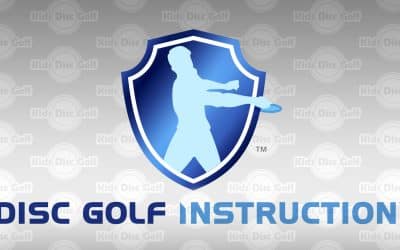
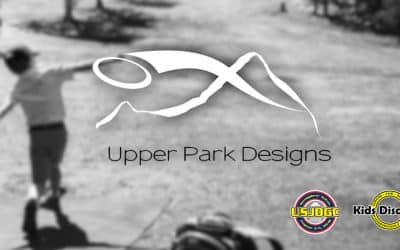
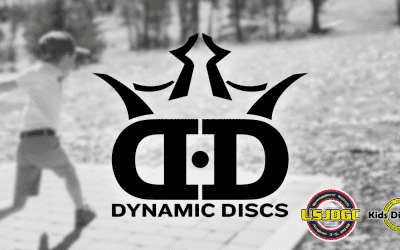







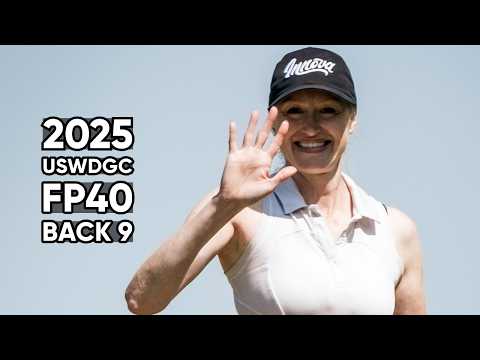
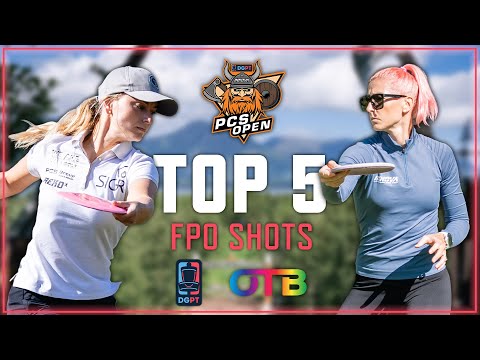

0 Comments